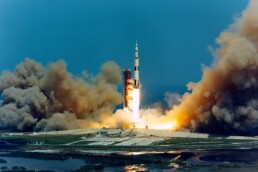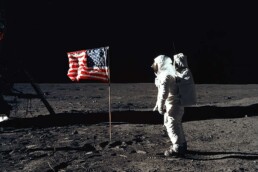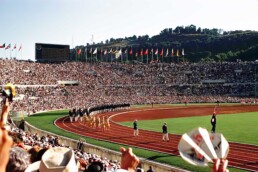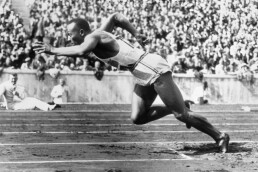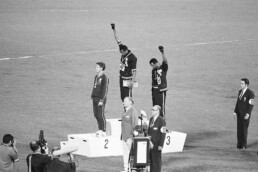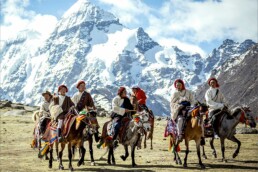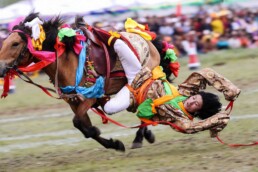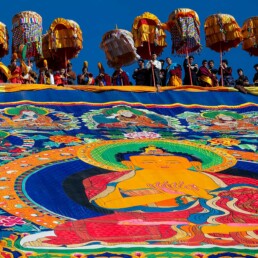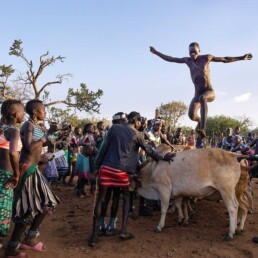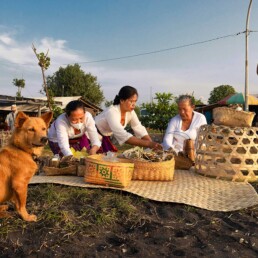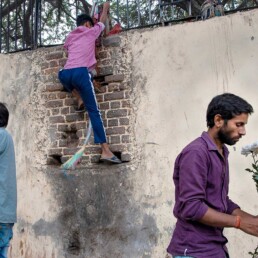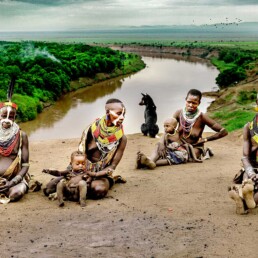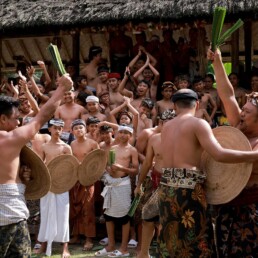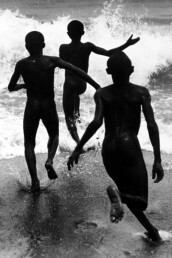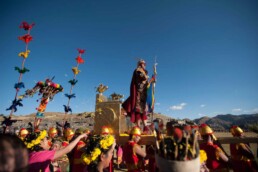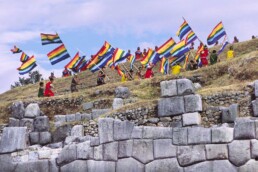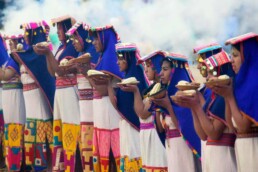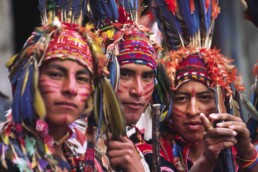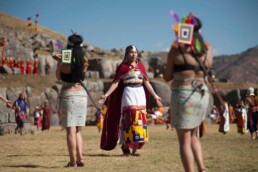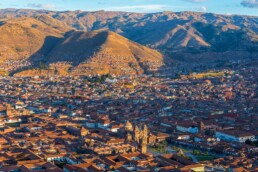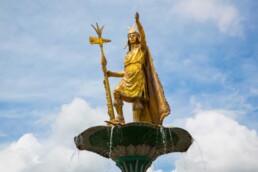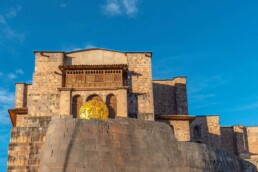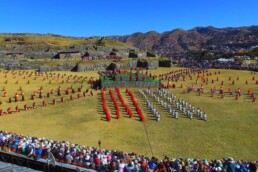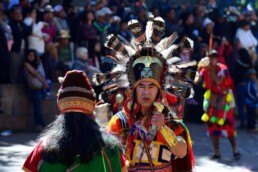One Giant Leap: The Mission and Humanity’s Triumph on the Moon
In the annals of human history, the Apollo 11 mission represents a tremendous testament to human inventiveness and tenacity. Apollo 11 was launched on July 16, 1969, from the Kennedy Space Centre in Florida, marking the culmination of a decade-long race that gripped the world’s imagination. This astonishing journey to the Moon was more than just a scientific accomplishment; it also represented geopolitical competition and human aspiration.
The Apollo 11 mission originated during the Cold War, a period of strong political and ideological confrontation between the United States and the Soviet Union. The space race was an outgrowth of this rivalry, with both nations competing for supremacy beyond Earth’s atmosphere. The stakes were great, not only for national prestige, but also for technological leadership and scientific progress.
The Soviet Union had made major advances in space research, including the launch of the first artificial satellite, Sputnik, in 1957 and the first human in space, Yuri Gagarin, in 1961. These feats paved the way for unprecedented competition, prompting the United States to boost its own space programme. On May 25, 1961, President John F. Kennedy delivered his famous speech to a joint session of Congress, which galvanised American resolve. In a moment of tremendous clarity and vision, Kennedy announced the lofty objective of landing a man on the Moon and safely returning him to Earth by the end of the decade. His remarks, “We choose to go to the Moon in this decade and do the other things, not because they are easy, but because they are hard,” were a rallying cry that energised a nation and laid the groundwork for what would become one of humanity’s greatest achievements.
Kennedy’s address was more than just rhetoric; it was a statement of intent that would motivate NASA and its employees. The Apollo programme, which began in response to Kennedy’s challenge, was a gigantic operation involving thousands of scientists, engineers, and technicians. Only the ambition that drove the programme could match its intricacy and magnitude. The Apollo 11 mission, launched in July 1969, was the pinnacle of this united endeavour.
The spacecraft, which included the Command Module “Columbia” and the Lunar Module “Eagle,” was launched using the Saturn V rocket, the most powerful rocket ever built. After travelling roughly 384,400 km, the lunar module separated from the command module and began its descent to the Moon’s surface. When “Eagle” landed in the Sea of Tranquilly on July 20, 1969, Neil Armstrong, the mission commander, became the first human to set foot on another celestial body. His famous remarks, “That’s one small step for [a] man, one giant leap for mankind,” reverberated far beyond the lunar surface, representing the unity and potential of human endeavour.
The Moonwalk was more than just an engineering accomplishment; it was also a powerful moment of human connection. For millions of people throughout the world, it symbolised the realisation of a goal that seemed nearly unbelievable just a decade before. Armstrong and Buzz Aldrin’s brief but historic visit to the lunar surface was aired live, thrilling audiences and instilling a sense of shared accomplishment. Michael Collins, the command module pilot, orbited the Moon alone, guaranteeing the crew’ safe return.
Apollo 11’s triumph was more than just a victory for the United States; it was a global milestone that crossed national lines. The project highlighted the tremendous powers of human inventiveness and international teamwork, paving the way for future space exploration. It also emphasised the necessity of vision and leadership in accomplishing seemingly impossible tasks. The lessons learnt from Apollo 11 continue to affect space exploration and technological innovation today.
In retrospect, the Apollo 11 mission remains a strong symbol of human ambition and accomplishment. It was a watershed event in history, demonstrating how adversity, ambition, and partnership can propel humanity towards incredible achievements. Apollo 11’s legacy lives on not only in space travel, but also in the collective spirit of discovery and adventure, which continues to inspire future generations. As we reflect on this great feat, it serves as a reminder of what humanity is capable of when motivated by a common vision and an unrelenting commitment to exploring the unknown.
From Olympia to Paris: The Timeless Tale of the Olympic Games
As the globe prepares to celebrate the grandeur of the 2024 Summer Olympics, a dazzling display of athletic prowess and global solidarity, now is a good time to reflect on the event’s long history. The Olympics have evolved from its ancient origins to their current standing as the pinnacle of world sports, serving as a dynamic emblem of human achievement and unity.
The Olympic Games originated in ancient Greece, approximately 776 BC, and were celebrated in the sanctuary of Olympia in honour of Zeus, the monarch of the Greek gods. This first gathering was one of several religious festivals that exalted both the divine and the human spirit. The ancient Greeks believed that competing in these games would allow athletes to gain personal glory while also bringing honour to their city-states. Unlike today’s contemporary Olympics, these early competitions were entirely male and featured events including as sprinting, wrestling, and chariot racing, all imbued with heavenly sanction and solemnity.
The ancient Olympics lasted nearly 12 centuries until Emperor Theodosius I, a fervent Christian, cancelled them in AD 393. This stoppage signalled the end of a beloved ritual, but it was not to be forgotten. Over a millennium later, in the late nineteenth century, a vision arose to revive the games. Pierre de Coubertin, a French educator and historian, played a key role in this resurgence. His idea became a reality in 1896, when the first modern Olympic Games were held in Athens, Greece, the same city that birthed the ancient tournament.
The first modern Olympics were modest by today’s standards, but they signalled the start of a global sporting phenomenon. The 1896 Games had 13 nations and 43 events, the majority of which were in track and field, swimming, and gymnastics. These early Games aimed to rekindle the spirit of its ancient forefathers while also promoting worldwide understanding and peace via athletics. De Coubertin’s philosophy of “Citius, Altius, Fortius” (Faster, Higher, Stronger) became a distinguishing motto, embodying the spirit of striving for greatness.
As the Olympics expanded, they became a forum for spectacular moments that went beyond mere athletic competition. Jesse Owens, an African-American athlete, performed admirably at the 1936 Berlin Games in the midst of a politically sensitive atmosphere. Owens’ four gold medals not only challenged racial views at the time, but also exemplified the Olympic ethos of breaking barriers. His successes served as a painful reminder of sport’s ability to unify and inspire people across national and racial lines.
Another watershed moment occurred in 1969, with the Mexico City Games. During the medal ceremony for the 200-meter final, American sprinters Tommie Smith and John Carlos raised their fists in a Black Power salute, a daring protest against racial inequality. This classic gesture made a powerful statement about the connection of sport and social issues, emphasising the Olympics as a forum for political and cultural expression.
The Olympics have also been known for their adaptability and perseverance in the face of hardship. The 1980 and 1984 Games were overshadowed by political boycotts, but the spirit of competitiveness and unity persisted. More recently, the Tokyo 2020 Olympics, which were held in 2021 owing to the COVID-19 epidemic, displayed the Games’ ability to adapt and survive. The event followed strict health procedures yet succeeded in uniting the world in a celebration of the human spirit and perseverance.
As we prepare for the 2024 Olympics, which will take place in Paris, the Games remain a huge stage for global solidarity and athletic brilliance. The French city, with its rich history and dynamic culture, promises to make an unforgettable background for this event. This incarnation of the Olympics will honour past traditions while also embracing current principles such as inclusion, environmentalism, and technological innovation.
The Olympics’ legacy is one of continual evolution, reflecting both society’s changing nature and humanity’s persistent pursuit of perfection. From ancient Greece to modern Paris, the Games have created a marvelous history, punctuated by moments of triumph, rebellion, and great solidarity. As we prepare to see the next chapter in this illustrious legacy, we are reminded of the Olympics’ ability to inspire, unify, and celebrate the limitless potential of the human spirit.
The Timeless Splendor of Tibetan Horse Racing Festival
The Tibetan Horse Racing Festivals stand out as a vibrant celebration of cultural heritage and historical legacy in Tibet’s highlands, where the scenery are as breathtaking as the traditions are deeply ingrained. Among these festivities, the Yushu Horse Racing Festival and the Litang Horse Racing Festival stand out, each of tradition and spectacle that stretches from the ancient past to the present day.
The Yushu Horse Racing Festival dates back to the nomadic lifestyle that has long dominated the Tibetan plateau. Historically, the celebration began as a way to highlight horses’ endurance and speed, which were essential to Tibetan nomads’ survival and daily lives. These races were more than just competitions; they represented a rite of passage for the horses and riders, demonstrating their strong affinity. What began as a practical test of equestrian talent grew into a spectacular celebration of Tibetan culture and community pride.
The Yushu Tibetan Autonomous Prefecture of Qinghai Province hosts the yearly celebration, which transforms the high-altitude plains into a thriving hub of activity. Set against the backdrop of towering hills and extensive plains, the event is a stunning display of speed and tradition. Riders wear in traditional garb, including lavishly embroidered jackets and tassel-adorned helmets, as they ready their horses for racing. These meticulously trained and nurtured horses are the festival’s headliners, displaying their power and grace to the fullest. The races honour Tibet’s centuries-old history of horseback riding by demonstrating the talents of both horse and rider in a series of spectacular events.
The Litang Horse Racing Festival, held in Litang County, Sichuan Province, has a similar deep connection to the region’s history and culture. This festival, known for its enormity and magnificence, is one of Tibet’s most important horse racing events. The Litang festival has strong roots in local mythology and Tibetan spiritual life. According to history, the event began as a harvest celebration and an opportunity to honour the local deities. Over the ages, it has evolved into a major event that not only commemorates the beginning of the agricultural cycle, but also underlines the local cultural identity.
Litang, with its broad high-altitude grasslands and spectacular environment, makes an appropriate location for this grand event. The festival lasts many days, and the entire town transforms into a lively celebration of Tibetan culture. The horse races are the main event, with riders from all around the country competing. The races are accompanied by a colourful atmosphere, with fans cheering and traditional music filling the air. The festival also includes traditional performances, such as Tibetan dance and opera, which contribute to the event’s unique cultural tapestry.
Both celebrations share themes based on the Tibetan people’s deep connection to their environment. The planning for these festivals is as involved as the events themselves. The intensive training of horses and precise preparation of riders highlight the festival’s importance in Yushu. This preparation reflects Tibetan culture’s regard and devotion for the horse, which has traditionally served as a symbol of power and endurance.
In Litang, preparations are equally comprehensive, with the entire village working together to organise the celebration. The opening ceremonies include ancient rituals and offerings to local deities, which set the tone for the races and other celebrations. These ceremonies underscore the festival’s spiritual components, emphasising the deeply held beliefs that sustain it.
The Tibetan Horse Racing Festivals of Yushu and Litang are more than just breathtaking exhibitions of speed and skill; they are living representations of Tibetan culture. They provide a look into the past, celebrating traditions and beliefs that have been passed down through generations. These festivals also serve as a link between the old and the present, demonstrating the continued significance of traditional activities in an ever-changing world.
Those who attend these events have an unprecedented opportunity to experience the essence of Tibetan culture. The racing, traditional costumes, and social celebrations all combine to create a vibrant and immersive event. The Yushu and Litang Horse Racing Festivals, held in the centre of the Tibetan plateau, are timeless icons of a culture that continues to exist despite modern-day obstacles.
Jahja Teguh Widjaja: Capturing Life Through the Eyes of a Pulmonologist
In the heart of Bandung, a seasoned pulmonologist, Jahja Teguh Widjaja spends his days treating patients and educating future doctors at Maranatha Christian University. Yet, beyond his medical expertise lies a profound passion for photography, particularly in the genres of documentary and street photography. This interview explores the fascinating journey of a man who has found a way to balance a demanding career with an equally demanding hobby, capturing the essence of life through his lens.
Can you tell us a short story about your journey as a pulmonologist and how you developed an interest in photography, particularly documentary and street photography?
I have been practising as a pulmonologist at Immanuel Hospital, Bandung for 25 years. Additionally, I am a full-time lecturer in Respiratory Diseases at the Faculty of Medicine, Maranatha Christian University, Bandung. My journey into photography began in 2013 when I attended the Salon Foto Indonesia exhibition in Bandung, organised by PAF Bandung. On a whim, I decided to visit the exhibition and met some PAF members who invited me to participate in a photography competition. At that time, I had just bought a camera and didn’t know how to use it properly, so I used the auto setting and gave it a try. Surprisingly, I won the first runner-up award. This success motivated me to take photography more seriously. I joined PAF Bandung and frequently attended photography workshops in Bandung and even Jakarta.
From the beginning, whenever someone asked me what subjects I preferred to photograph, I always answered people. At that time, I had no understanding of photography genres. Over the years, I have experimented with various genres, but I have always gravitated towards photographing people. My passion eventually narrowed down to Documentary, Culture, and Street Photography.
How do you balance the demands of your medical profession with your passion for photography?
I do not compartmentalise my life. When I am working as a doctor, I fully dedicate myself to serving and helping my patients. As a lecturer, I focus entirely on imparting knowledge to my students. When I am out photographing, I do it earnestly and wholeheartedly to capture the best images I can. The key is to embrace everything wholeheartedly and joyfully.
What sparked your interest in photography, particularly in the genres of documentary and street photography?
Photography allows me to create works that express my response to the world around me. My interest in photographing people likely stems from my daily interactions with people in my medical practice. Documenting human activities in a spontaneous and candid manner through documentary and street photography has become a style that I thoroughly enjoy and resonate with.
Are there any photographers or artists who have influenced your style and approach to documentary and street photography?
In Indonesia, I admire Erik Prasetya and his concept of “Estetika Banal.” I also appreciate Beawiharta’s journalistic documentary approach and have learned a lot from Agung Prameswara about creating photo stories. Internationally, I enjoy the spontaneity of Saul Leiter and Daidō Moriyama, the neatness of Matt Stuart’s street photos, and the street documentary styles of Robert Frank, Fred Herzog, and Joel Meyerowitz. Alex Webb’s complex, multi-layered dramas, Fan Ho’s classic style, Lee Jeffries’ street portraits, and the social documentaries of Sebastiao Salgado and Abbas are also significant influences. For travel documentaries, I admire Michael Yamashita and Steve McCurry. I don’t just know their names but also collect their photo books.
What inspired you to create the best-selling photo book “PANDEMIC”? Can you share some insights into the process of documenting the pandemic situation at your hospital?
During the Covid pandemic, I was responsible for leading the covid team at Immanuel Hospital, Bandung. I decided to document the efforts of the medical staff as they battled to care for covid patients. As a doctor involved in treating these patients, I took photographs of my colleagues while still performing my duties. Technically, it was challenging, as I had to wear full protection while taking the photos. Over time, I accumulated a substantial collection of photos, which led to the idea of creating a photo book, eventually published as “PANDEMIC.”
Do you have any upcoming photography projects or exhibitions that you are excited about? Can you give us a glimpse into what’s next for you?
I am planning to create a second series of the book titled “PANDEMIC: A MEMOIR.” This book will not only feature photographs but also include short notes from medical staff and patients about their experiences during the pandemic.
Can you share a memorable experience or story from your photography adventures?
Every experience and moment in my photography journey is precious and memorable.
You’ve joined several Mahacaraka adventures. What makes Mahacaraka unique for you?
There are several aspects that make me frequently join Mahacaraka trips. Firstly, Mahacaraka’s photography trips are meticulously designed, prepared, and executed. Secondly, their destinations are often unique. Thirdly, their concept aligns perfectly with my interest in People Photography, capturing cultural rituals, festivals, human interest, street scenes, and portraits.
Can you describe a particular experience or trip with Mahacaraka that has had a profound impact on your photography?
On Mahacaraka trips, I have learned a great deal about photography, from basic techniques to advanced skills and, most recently, creating photo stories. These experiences have significantly benefited my photographic development.
What advice would you give to other professionals who have a passion for photography but struggle to find time for it?
Everyone has the same amount of time; the difference lies in how we use it. If we have a genuine passion for photography, we should allocate time to learn and develop our photography skills.
In the heart of every professional lies a passion that often goes unnoticed amidst the hustle of daily responsibilities. This interview encapsulates the essence of balancing a demanding career with a fervent hobby, showing that with dedication and joy, it is possible to excel in both. As our interviewee continues to capture the world through his lens, his story serves as an inspiration for all who seek to blend their professional and personal passions seamlessly.
The Legendary Sea Captain Who Defied the Spanish Armada
Sir Francis Drake’s narrative is one of adventure, controversy, and long-term consequence. Drake was born in Tavistock, Devon, approximately 1540, and rose from humble beginnings to become one of history’s most famous sea captains. His adventures on the high seas have had a lasting impact on the world, inspiring exploration, maritime combat, and worldwide trade.
Drake grew up by the water, immersed in England’s nautical culture. His career began with the tutelage of his cousin, Sir John Hawkins, a well-known privateer. During these formative years, he took part in journeys to the Americas and the booming slave traffic, which polished his navigational abilities and adventurous spirit.
His most recognised achievement was his circuit of the globe between 1577 and 1580. This remarkable voyage was only the second successful circumnavigation since Magellan’s expedition. The expedition was laden with danger, from dangerous seas to unfriendly encounters, but it cemented his reputation as an adventurous explorer. This feat demonstrated not only the potential of global sea travel, but also the strategic and economic advantages of such endeavours.
The voyage had far-reaching ramifications for England and the world. It established the viability of long-distance sea expeditions, laying the groundwork for future explorations and the eventual construction of global commerce networks. This expedition also gave vital geographical knowledge, which aided the world’s comprehension of hitherto unknown places. The successful sailing of the Strait of Magellan and the discovery of new Pacific routes were especially important, influencing future nautical exploration.
Drake’s escapades were not restricted to exploration. In 1587, he led a daring raid on the Spanish port of Cadiz, which became known as the “singeing of the King of Spain’s beard.” This daring strike disrupted the Spanish Armada’s invasion plans and demonstrated Drake’s tactical prowess. His leadership during the defeat of the Spanish Armada in 1588 solidified his reputation as a national hero. The strategic deployment of fire ships and creative naval tactics were critical in repelling the Spanish armada, defending England from invasion, and shifting the balance of power in Europe.
The defeat of Spain’s Armada had far-reaching ramifications. It signalled the end of Spain’s naval dominance and the development of England as a powerful maritime power. This move had far-reaching economic and political repercussions, allowing the English to expand their dominance and establish colonies in the New World. Drake’s role in this critical event demonstrated the strategic value of naval might, as well as the potential for marine exploration and warfare.
Despite his valiant efforts, Drake’s legacy is not without dispute. His role in the slave trade casts a pall over his accomplishments, emphasising the negative sides of his career. The ethical ramifications of his actions continue to spark debate, highlighting the intricacies of historical personalities and the diverse character of their legacies.
His influence on English culture is clear from the countless references to his exploits in literature, art, and folklore. Queen Elizabeth I bestowed knighthood upon him in 1581, symbolising his achievements to the nation and role in strengthening English authority. His exploits sparked numerous legends and became etched in the national psyche, moulding public perceptions of exploration and valour.
Significant places related to Drake’s life and voyages, such as his birthplace in Tavistock and his residence in Plymouth, provide a concrete link to his legacy. Drake’s Island in Plymouth Sound and Drake’s Bay in California serve as reminders of his global influence. These locations draw history buffs and tourists, offering glimpses into the life and times of this great character.
Drake’s journeys influenced subsequent generations of explorers and adventurers, from the Elizabethan era to the Age of Discovery and beyond. His contributions to navigation and marine exploration expanded the subject tremendously, instilling a sense of curiosity and ambition that drove humanity to explore the world’s outer reaches.
In summarising his legacy, it is apparent that his most major contributions were to global exploration and maritime dominance. His tour of the globe and key role in defeating the Spanish Armada changed the geopolitical landscape, paving the door for global commercial expansion and the formation of English colonies. These accomplishments demonstrate the transforming potential of exploration and the long-lasting impact of a single individual on the course of history.
The legacy exemplifies the eternal spirit of adventure and the pursuit of knowledge that defines the human condition. Exploring the historical landmarks related with his life and diving deeper into his intriguing narrative allows us to better understand the complexity and accomplishments of a man who transformed the world. For those interested in history, culture, and travel, Sir Francis Drake’s life is a fascinating voyage through the ages, illustrating the deep impact of exploration on our worldwide heritage.
Bastille Day: The Spark of the French Revolution
Every year on July 14th, France comes alive with bright celebrations, fireworks, and parades to commemorate Bastille Day, also known as La Fête Nationale. This national holiday commemorates the storming of the Bastille prison in 1789, a watershed moment that not only started the French Revolution but also marked a significant shift in the quest for liberty and equality.
The storming of the Bastille on July 14, 1789, was a spectacular and symbolic act of resistance to the monarchy’s tyranny. At the time, the Bastille was more than just a jail; it also represented King Louis XVI’s ultimate power. The stronghold housed political prisoners whose sole crime was opposing the king, making it a focal focus of public outrage and dissatisfaction. When Parisians attacked the Bastille out of despair and inspired by Enlightenment principles, it signalled the start of a new period in French history.
Years of political, economic, and social dissatisfaction had driven the French Revolution. Heavy taxation, widespread poverty, and the monarchy’s inability to meet the demands of its subjects had produced a dangerous climate. The storming of the Bastille served as a watershed moment, symbolising the end of the old regime and the emergence of popular power. It sent a strong statement that the citizens would no longer tolerate injustice and were willing to fight for their rights.
During this time, key leaders like as Maximilien Robespierre, Georges Danton, and Jean-Paul Marat arose, each playing an important part in leading the revolution. Their leadership and vision influenced the revolution’s direction, championing the ideas of liberty, equality, and brotherhood. These beliefs not only drove the revolution, but they also established the foundation for modern democratic countries.
The assault of the Bastille had far-reaching consequences. It became a symbol of liberty and the fight against oppression, motivating not only the French but people all around the world. The events of July 14th revealed that even the most powerful symbols of oppression may be challenged and overcome by the people’s collective determination. This powerful message had a global impact, influencing later revolutionary movements and the development of democratic ideas.
Bastille Day became a national holiday in 1880, strengthening its place in French national identity. The ceremonies on this day serve as a reminder of the battle for freedom and the French Republic’s unwavering devotion to its values. The day is honoured by a major military parade on the Champs-Élysées, which includes the President of France and other dignitaries. This parade demonstrates the French military’s strength and togetherness, demonstrating the country’s unwavering dedication to liberty and national identity.
Bastille Day is celebrated all around France with a variety of celebrations. In Paris, the Eiffel Tower is the focal point of a stunning fireworks display, dazzling the night sky with bright colours. Public events, performances, and communal meals bring people together, instilling a sense of belonging and tradition. Each area of France lends its own unique flavour to the festivities, emphasising the diversity and richness of French culture.
Around the world, French communities and Francophiles celebrate, reflecting French culture’s global influence and the universal attraction of the ideas of liberty and equality. Cities from New York to Tokyo conduct festivities in the spirit of Bastille Day, which celebrates French culture and the French Revolution’s lasting influence.
The storming of the Bastille and the accompanying French Revolution had a significant impact on contemporary French politics and society. The revolution resulted in the foundation of the French Republic, the compilation of the Declaration of the Rights of Man and Citizen, and the promotion of secularism and democratic administration. These reforms changed France’s political scene and had an impact on the global development of democratic institutions.
The cultural influence of Bastille Day goes beyond political transformation. It has been immortalised in literature, art, and popular culture, representing the fight for justice and human rights. The ideas of liberty, equality, and fraternity continue to inspire movements for social and political change, reminding us of the power of collective action and the significance of speaking out against injustice.
When comparing Bastille Day to other national holidays, it is clear that the celebration of freedom and independence is a common theme. Bastille Day, like Independence Day in the United States and Canada Day, serves as a reminder of the battles and sacrifices required to attain and protect these fundamental rights. These festivals promote national pride and unity while also promoting contemplation on the values that sustain a fair and equitable society.
The enduring significance of Bastille Day stems from its depiction of the triumph of the people over oppression. It serves as a compelling reminder that the struggle for freedom and equality is ongoing, and that the ideas established during the French Revolution are still important today. As we commemorate this historic occasion, we are reminded of the significance of these ideals in moulding our world, as well as our responsibility to uphold them.
The Decisive Moments of Henri Cartier-Bresson
Henri Cartier-Bresson is one of the most revered and influential photographers in history. Cartier-Bresson, dubbed the “Father of Modern Photojournalism,” captured the essence of human experience with an amazing ability to seize the brief, decisive moments that characterise life. His photos are more than just historical documents; they are significant narratives that depict the complexities of the human condition.
Cartier-Bresson was born in Chanteloup-en-Brie, France, in 1908, and grew up in an art and culture-rich environment. His affluent family nurtured his artistic interests, prompting him to study painting. Influenced by the Surrealist movement, he developed a keen eye for the spontaneous and strange, which would later become characteristics of his photographic approach. His education and artistic interests created the groundwork for his distinct approach to photography.
Cartier-Bresson’s switch from painting to photography occurred after he encountered a shot by Martin Munkácsi that had a tremendous impression on him. This snapshot depicted boys racing into the surf of Lake Tanganyika, portrayed with a spontaneity and vibrancy that art could not replicate. Cartier-Bresson was inspired to buy his first Leica camera, which allowed him to explore the world with an unobtrusive lens while capturing candid moments with precision.
Cartier-Bresson co-founded Magnum Photos in 1947 with legendary photographers Robert Capa and David Seymour. This cooperative agency revolutionised photojournalism by giving photographers the freedom to capture stories as they saw fit. Magnum’s cooperative culture mirrored Cartier-Bresson’s conviction in the purity and authenticity of visual narrative. His work at Magnum cemented his status as a prominent figure in the field.
One of the most distinguishing features of Cartier-Bresson’s work is the concept of “The Decisive Moment,” which is drawn from the French “Images à la Sauvette.” This theory focused on capturing the exact moment when a scene’s visual and emotional elements came together to form a striking image. His photograph “Behind the Gare Saint-Lazare” shows this, with a man leaping over a puddle and his reflection caught in perfect symmetry, symbolising the transient yet eternal aspect of time.
Cartier-Bresson’s photographic style was distinguished by his excellent use of composition, lighting, and candid photographs. He eschewed using flash and frequently shot in black and white, feeling that these decisions retained the sincerity of the event. His Surrealist upbringing inspired his attention on spontaneity, as he captured scenes that showed deeper truths about human nature and social structures.
His Leica camera was more than just a tool; it was a reflection of his artistic vision. Its small size and quiet operation enabled him to glide unnoticed among crowds, capturing candid moments that provided genuine insights into his subjects’ life. This method was critical in his capacity to capture key historical events and social developments.
From the Spanish Civil War to the liberation of Paris and the advent of Communism in China, Cartier-Bresson’s lens captured important moments in the twentieth century. His ability to be at the right place at the right moment, along with his compositional skills, produced photographs that are both historically significant and artistically deep. His portraits, including one of Mahatma Gandhi taken soon before his assassination, caught not only the likeness but also the spirit of his subjects, making them timeless.
Although he returned to painting in his later years, his effect on photography remained strong. His efforts were appreciated around the world, and he received various medals and honours for them. His significant books and exhibitions have continued to inspire and teach future generations of photographers, keeping his techniques and attitude current.
When considering Cartier-Bresson’s contributions, it is apparent that his legacy goes beyond his individual photos. He pioneered a new method of viewing and documenting the world, combining art and journalism to create images that reflect the universality of human experience. His work with Magnum Photos set a new benchmark for ethical and powerful reportage. Henri Cartier-Bresson’s legacy has had a great impact not only on the area of photography, but also on the broader notion of visual narrative and cultural documentation. His ability to capture the decisive moment has left an everlasting effect on the art of photography, cementing his status as one of the medium’s most influential figures.
Suitcase Strategies For Savvy Travelers
Choosing the correct suitcase can considerably improve your travel experience, providing ease and peace of mind. Whether you’re going on a quick business trip, an adventure, or a relaxing vacation, the appropriate luggage is vital for a smooth and pleasurable voyage.
Suitcases have a long and varied history that parallels the trips they undertake. Suitcases have developed to fit the changing needs of travellers, from sturdy, leather-bound trunks in the nineteenth century to lightweight, durable polycarbonate shells today. Suitcases were frequently large and heavy in the early days of travel, built to carry complete wardrobes and accessories for long journeys. Today, however, the emphasis has turned to convenience, durability, and style, reflecting the fast-paced and mobile nature of modern travel.
Cultural factors have had a profound impact on the evolution of luggage design. For example, the minimalist and efficient designs popular in Japanese culture impacted the development of tiny, lightweight luggage. Meanwhile, European fashions have frequently emphasised elegance and craftsmanship, resulting in luggage that are both utilitarian and visually appealing.
When selecting a suitcase, one of the first choices is between hard-shell and soft-shell options. Hard-shell luggage, composed of materials such as polycarbonate or aluminium, provide great protection for your valuables. They are especially useful for transporting fragile things because the stiff shell helps avoid damage from impacts. Soft-shell luggage, which are typically composed of durable fabrics such as nylon or polyester, offer greater flexibility. They might be easier to fit into small locations and frequently have external pockets for easy access to necessities.
Another key consideration is whether to use a spinner or roller luggage. Spinner bags, with four 360-degree rotating wheels, provide exceptional manoeuvrability, allowing you to easily navigate crowded airports and restricted aeroplane aisles. Roller luggage, which have two fixed wheels, are typically more stable on uneven ground and easier to control while climbing stairs or curbs.
The nature of your vacation determines whether you should bring carry-on or checked luggage. Carry-on luggage is perfect for short journeys or when you don’t want to have to check in bags and wait at baggage claim. It also assures that your valuables remain with you throughout your vacation, lowering the possibility of losing luggage. However, for longer travels or when you need to transport more items, checked luggage provides the extra space you require.
Size and weight are important considerations because airlines have particular regulations on luggage dimensions and weight limits. Luggage that is too big or too heavy can result in expensive penalties and additional hardship. It is critical to select a bag that maximises space while staying within the permitted dimensions.
Durability and quality are important factors to consider while choosing a luggage. Polycarbonate and aluminium are common materials for hard-shell luggage because of their strength and resistance to impact. Soft-shell suitcases are made of durable fabrics such as ballistic nylon and polyester, which can withstand wear and tear. It is critical to select a suitcase that can withstand the demands of travel while safeguarding your valuables.
Internal storage and compartments are essential for keeping things organised while travelling. Look for luggage with many compartments and pockets so you can quickly separate and reach different types of goods. Compression straps and removable dividers can help you stay organised and make the most of your space.
Security aspects are also worth considering. Built-in locks, particularly those that are TSA-approved, offer additional security and peace of mind. Some luggage also have anti-theft zippers and reinforced frames, which can help prevent tampering and preserve your possessions.
Comfort and manoeuvrability are critical for a stress-free travel experience. Ergonomic handles, adjustable heights, and robust wheels make it easier to move your suitcase. Expandable luggage are very handy for journeys where you may gather additional stuff, as they provide extra space when necessary.
Brand reputation and warranty are important elements to consider. Established brands frequently provide dependable items with comprehensive warranties, ensuring that your investment is protected. It is advisable to read customer reviews and ratings before selecting a luggage that is known for its quality and durability.
For people who care about the environment, eco-friendly suitcases constructed from recyclable materials are becoming more common. These solutions enable you to travel ethically while yet reaping the benefits of current suitcase design. Finally, personal style and simplicity of recognition are critical concerns. A suitcase that matches your own style can improve your travel experience, while unusual colours or patterns help you find your luggage on the carousel.
Finally, selecting the correct luggage requires careful consideration of a number of aspects, including kind, size, material, and features. Understanding your travel demands and preferences allows you to select luggage that will make your vacation more comfortable and pleasurable. Whether you’re visiting cultural sites or taking historical excursions, the appropriate luggage may be a reliable companion, keeping your possessions safe and organised during your journey.
The Incan Journey to The Sun
As the summer solstice approaches, Cusco, Peru, celebrates one of the most important and lively celebrations on the Andean calendar: Inti Raymi. This ancient event, also known as the Festival of the Sun, is a spectacular tribute to the Sun God, Inti, whom the Incas venerated. Inti Raymi provides travellers and culture aficionados with a one-of-a-kind peek into Peru’s rich history and enduring cultural legacy.
Inti Raymi, which means “Sun Festival” in Quechua, has been celebrated since the Inca Empire’s height. This spectacular ceremony, founded by the ninth Sapa Inca, Pachacuti, in the 15th century, commemorated the Southern Hemisphere’s winter solstice, the moment when the sun is furthest from the equator. This critical occasion marked the start of the Incan New Year, a time of rejuvenation and hope.
The Incas held that Inti, the Sun God, was the ancestor of their monarchs and the most significant deity in their pantheon. The event was more than just a celebration of the sun; it was also a way to ensure the fertility of their fields and the well-being of their people. Rituals, sacrifices, and offerings were performed to honour Inti and obtain his blessings for plentiful crops.
Inti Raymi traces its origins back to the Inca civilization’s agricultural cycles. The Incas were adept farmers who relied largely on sunlight for their crops. The winter solstice was a watershed moment in the agricultural calendar, signalling the return of longer days and the prospect of abundant harvests. The Sapa Inca and his priests would perform elaborate ceremonies to appease Inti, requesting his protection and favour for the coming year.
At the height of the festival, the Sapa Inca would undertake a theatrical rite in which he would serve the Sun God a drink made from chicha, a traditional maize beer. This gesture symbolised the emperor’s strong relationship with Inti, reaffirming the Inca monarchs’ divine right to control their people. The ceremony also involved the sacrifice of llamas, whose blood was thought to purify and fertilise the ground, bringing wealth to the community.
Inca civilization was inextricably linked to agricultural cycles and religious observances, and Inti Raymi embodied both. The event represented a public confirmation of the community’s relationship with their gods, particularly Inti. The festivities, presided over by the Sapa Inca himself, emphasised the Inca Empire’s social and political coherence. The ceremony strengthened the Incas’ cosmological ideas and reliance on celestial happenings.
After the Spanish conquered the Inca Empire in the 16th century, many indigenous traditions, like Inti Raymi, were suppressed. However, the celebration was revived in 1944 by Cusco’s cultural authorities, who recognised the need of conserving and commemorating Incan tradition. Today, Inti Raymi is a vibrant and dynamic festival that draws thousands of tourists from all over the world who want to see this show of history and culture.
Modern-day Inti Raymi begins with a magnificent procession through Cusco’s streets, concluding at the historical site of Sacsayhuamán. Participants dress in extravagant traditional Inca costume, including the Sapa Inca and his royal court’s ornate robes. The procession is a visual feast, with musicians playing traditional Andean instruments, dancers performing ancient rites, and priests praying in Quechua.
The ceremonial procession is one of the most fascinating parts of Inti Raymi. It begins at Cusco’s Qorikancha, or Sun Temple. From there, the procession heads to the Plaza de Armas, the city’s main square, before ascending to the Sacsayhuamán stronghold. This voyage symbolises the Incas’ ancient quest to honour their gods.
The event revolves around the ritual offerings offered to Inti and other deities. Participants make chicha (corn beer), coca leaves, and a variety of traditional meals as offerings. These acts of devotion are carried out with profound reverence, representing thanks and petition for the gods’ favour.
Music and dance are central to Inti Raymi, reflecting the festival’s joyous spirit. Traditional Andean instruments like the pan flute and charango play melancholy tunes, while dancers perform choreographed routines passed down through generations. These performances relate stories about Incan mythology, agricultural cycles, and historical events, which provide complexity to the festival’s story.
The culmination of Inti Raymi takes place at Sacsayhuamán, a beautiful stone fortification that overlooks Cusco. The Sapa Inca, portrayed by an actor, performs the key ceremonies, including a symbolic sacrifice to honour Inti. The ceremony is a spectacular recreation of old Incan rituals, complete with exquisite costumes, extravagant set pieces, and passionate prayers. This venue, with its historical and architectural grandeur, provides an exquisite backdrop for the festival’s most important activities.
The Living Heritage of Cusco’s Inca Roots
Cusco often known as the “Navel of the World,” is a city where the past and present blend effortlessly, creating Inca legacy that continues to form its character. Cusco, nestled in the Andes highlands, was once the capital of the great Inca Empire, a civilization known for its architectural skill, agricultural advances, and intricate social institutions. Today, the city’s rich history and long-standing cultural customs make it an intriguing destination for both tourists and historians.
The city has a rich history and legends surrounding its origins. According to Inca mythology, Manco Cápac and Mama Ocllo established the city after emerging from Lake Titicaca at the order of the sun deity Inti. Archaeological evidence, however, indicates that Cusco was already a large settlement before the Incas ascended to power in the early thirteenth century. Cusco, led by Inca monarch Pachacuti, was built into a huge metropolitan centre that reflected the empire’s majesty and refinement.
Inca architecture shows the ancient civilization’s great technical and creative skills. The city’s layout was precisely constructed to coincide with celestial phenomena, demonstrating the Incas’ strong connection to their surroundings. Cusco was constructed in the shape of a puma, a sacred animal in Inca mythology that represents strength and wisdom. The puma’s head was represented by Sacsayhuamán, a fearsome stronghold above the city, while its body sprawled out across the urban landscape. This layout not only had symbolic value, but it also demonstrated the Incas’ ability to combine urban planning with their spiritual beliefs.
One of the most notable aspects of Inca architecture is its precise masonry. Massive stones were carved and fitted together with such precision that no blade of grass could fit between them, as seen in Sacsayhuamán’s walls and the Qorikancha temple. The trapezoidal doors and windows, which were built to withstand earthquakes, demonstrate the Incas’ architectural inventiveness. The streets were set out in a grid arrangement, which facilitated efficient mobility and improved the city’s defensive capabilities. Canals and aqueducts crisscrossed the city, providing a consistent water supply and demonstrating the Incas’ advanced mastery of hydraulics.
Cusco was more than just an architectural marvel; it was also the Inca Empire’s spiritual centre. The Qorikancha, or Temple of the Sun, was the most sacred location, dedicated to Inti, the sun god. It was covered in gold, symbolising the Incas’ wealth and adoration for their deities. Today, the vestiges of Qorikancha are juxtaposed with the Spanish colonial church of Santo Domingo, forming a moving visual tale of invasion and cultural blending.
Religious traditions in were firmly interwoven in the Incas’ everyday existence. Major festivals, such as Inti Raymi, the Festival of the Sun, were marked by elaborate rites and rituals. This winter solstice festival honoured the sun god while also ensuring the land’s fertility. Even today, Inti Raymi is reenacted with tremendous enthusiasm, attracting both residents and tourists to see this vivid show. The ongoing commemoration of such festivities demonstrates the Inca customs’ persistent influence in modern Cusco.
The social structure of Inca civilization was complex and hierarchical. The Sapa Inca, seen as a divine sovereign, reigned supreme. Below him were the nobles, who oversaw the empire’s vast lands, and the commoners, who cultivated the land and served in a variety of roles. This hierarchical structure was reflected in the city’s layout, with separate zones designated for different classes and functions. The agricultural terraces surrounding Cusco, such as those in the Sacred Valley, demonstrate the Incas’ creative farming practices and ability to adapt to the harsh Andean climate.
The entrance of Spanish conquistadors in the 16th century constituted a watershed moment in Cusco’s history. During the conquest, numerous Inca structures were destroyed and either disassembled or converted for colonial use. Despite this, the indomitable spirit of the Inca tradition endured. The blend of Inca and Spanish influences is obvious in Cusco’s architecture, where colonial churches rest on ancient foundations, as well as the city’s cultural activities, which combine indigenous and European components.
In modern-day Cusco, there are initiatives to conserve and honour the Inca history. The city has been classified as a UNESCO World Heritage Site, recognising its historical significance and the need for preservation. Initiatives to restore and maintain Inca monuments, as well as promote traditional festivals and crafts, are critical to preserving the cultural legacy. Tourism has provided economic benefits, but it also presents obstacles, such as the need to balance development with preservation.
The city provides visitors with numerous opportunity to learn about the city’s rich Inca past. Sacsayhuamán, Qorikancha, and the Sacred Valley offer insights into the Incas’ architectural and cultural achievements. Participating in local festivities like Inti Raymi and visiting crowded markets selling traditional crafts provide immersive cultural experiences. These connections not only enrich the vacation experience, but also contribute to the preservation of Cusco’s distinct cultural identity.
Cusco is a lively reminder of the Inca civilization’s ongoing influence. Its streets and structures tell stories of a magnificent empire, and its cultural rituals preserve the Inca spirit. The city’s capacity to honour its history while embracing the present transforms it into a living museum and bustling cultural centre. Exploring Cusco is more than just a voyage through time; it’s an invitation to witness the tenacity and continuity of an exceptional history that continues to inspire and captivate the world.
